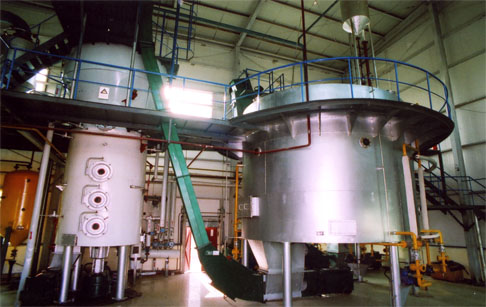
In the global edible oil market, soybean oil holds a significant position due to its wide availability and relatively low cost. However, many people have misconceptions about the production process of soybean oil. Some might think that the production of soybean oil is a simple one - step process, but in fact, modern soybean oil mills adopt a multi - step production mode. This production mode is a complex and refined process that involves several key steps to ensure high - quality and efficient oil production.
The multi - step production process of soybean oil mainly includes cleaning, shelling, crushing, cooking, pressing, and refining. Let's take a closer look at each step:
The cleaning step is like a "gatekeeper" in the production process. It is responsible for removing impurities such as soil, stones, and broken soybeans from the raw soybeans. Usually, this step can remove about 95% of the impurities. By removing these impurities, the quality of the final oil product can be significantly improved, and it also protects the subsequent production equipment from damage.

Shelling is to separate the soybean hulls from the soybeans. Soybean hulls contain very little oil, and removing them can increase the oil yield. Generally, shelling can increase the oil yield by about 1 - 2%.
Crushing breaks the soybeans into small pieces, which increases the surface area for subsequent processing. Cooking then heats the crushed soybeans to a suitable temperature to make the oil cells in the soybeans easier to break. These two steps together can increase the oil yield by about 15 - 20% compared to raw soybeans.

The pressing step is where the actual oil extraction takes place. Through mechanical or solvent extraction methods, the oil is separated from the soybeans. The average oil yield in this step can reach about 18 - 20%. Compared with other vegetable oils, such as palm oil (with an oil yield of about 20 - 25% from palm fruit) and rapeseed oil (with an oil yield of about 35 - 45% from rapeseed), the oil yield of soybean oil may seem relatively low. However, considering the large - scale cultivation and wide availability of soybeans, the overall production volume is still considerable.
Refining is the final step to improve the quality of the oil. It removes substances such as free fatty acids, pigments, and odors from the crude oil to make the oil clearer, more stable, and better - tasting. After refining, the quality of the soybean oil can meet the high - standards required by the market.
Let's take a well - known soybean oil mill in the United States as an example. By adopting the multi - step production mode, this mill has increased its annual production capacity by 30% in the past five years. At the same time, the quality of its soybean oil products has been recognized in the market, leading to an increase in market share. Through cost - control and product quality improvement, the mill's profit margin has increased by about 15%.
In the multi - step production mode, the cost of soybean oil mills mainly includes raw material costs (soybeans), equipment purchase and maintenance costs, labor costs, and energy costs. The profit sources mainly come from the sale of soybean oil and by - products such as soybean meal. Soybean meal is a valuable animal feed ingredient, which can bring additional income to the oil mill.
In conclusion, the multi - step production mode is of great importance for soybean oil mills. It can not only improve the quality and yield of soybean oil but also effectively control production costs. By optimizing each production step, soybean oil mills can achieve higher economic benefits. Do you have any questions about the multi - step production process of soybean oil? Feel free to leave a message below!
If you are looking for professional advice and technical support for your soybean oil production business, our company is here to help. We have a team of experts with rich experience in the field of soybean oil production. Contact us today, and let's work together to enhance the economic efficiency of your soybean oil mill!

